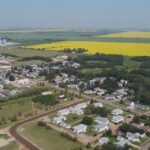The much-anticipated road development to Ontario’s resource-rich Ring of Fire region faces yet another significant setback, with provincial officials confirming the project timeline has been pushed back to 2028. This delay represents the latest hurdle in what has become a decades-long effort to unlock one of Canada’s most promising—and challenging—resource development opportunities.
Provincial Minister of Northern Development Greg Rickford confirmed yesterday that construction timelines have shifted substantially from earlier projections, citing complexities in environmental assessments and ongoing consultations with First Nations communities. The announcement comes as a disappointment to both mining interests and local communities who have long awaited the economic opportunities promised by the project.
“What we’re witnessing is the culmination of planning challenges that have plagued this development since its inception,” says resource economist Dr. Elaine Chen of the University of Toronto. “The Ring of Fire represents approximately $60 billion in mineral potential, but accessing these resources requires infrastructure development through some of Ontario’s most ecologically sensitive regions.”
The Ring of Fire, located approximately 500 kilometers northeast of Thunder Bay in Ontario’s Far North, contains significant deposits of chromite, nickel, copper, and platinum—critical minerals increasingly important for green technology manufacturing and Canada’s economic future. The road infrastructure is essential not only for resource extraction but also for connecting remote Indigenous communities to vital services.
Chief William Meshake of the Matawa First Nations expressed mixed reactions to the delay. “Our communities require meaningful partnership in this development, not just consultation. While we recognize the economic potential, this must be balanced with environmental stewardship and respect for traditional territories,” he stated in a formal response to the announcement.
The provincial government has already invested over $1.1 billion in development funding for the project, including road construction and community benefits. However, this latest delay raises questions about whether the project can maintain political support through changing government priorities and economic conditions.
Industry analysts note that the delay could have ripple effects through Canada’s mining sector, particularly as competition for critical minerals intensifies globally. “Ontario’s chromite deposits represent North America’s largest known reserve of this strategic metal,” explains mining analyst James Robertson. “With increasing geopolitical tensions around supply chains, these delays potentially compromise Canada’s position in future markets.”
Environmental groups have maintained concerns about the project’s potential impacts on the region’s delicate ecosystem, which includes one of the world’s largest carbon-storing peatlands. The area serves as important habitat for numerous species and plays a crucial role in regional watershed management.
For northern communities, the postponement means continued economic uncertainty. The project had promised to create approximately 5,500 direct and indirect jobs, a significant opportunity in a region with historically limited economic development options. Leaders in northern Ontario municipalities have expressed frustration at what they characterize as a pattern of delays and shifting priorities.
The setback also raises questions about Ontario’s ability to execute large-scale infrastructure projects in remote regions—a challenge that extends beyond this specific development. With climate change increasingly affecting northern environments and construction seasons, the window for efficient development may be narrowing rather than expanding.
As stakeholders absorb this latest timeline adjustment, the fundamental question remains: will the Ring of Fire’s immense mineral potential ever be fully realized, or will it remain perpetually just beyond reach due to the complex interplay of environmental concerns, Indigenous rights, and economic development challenges?

























